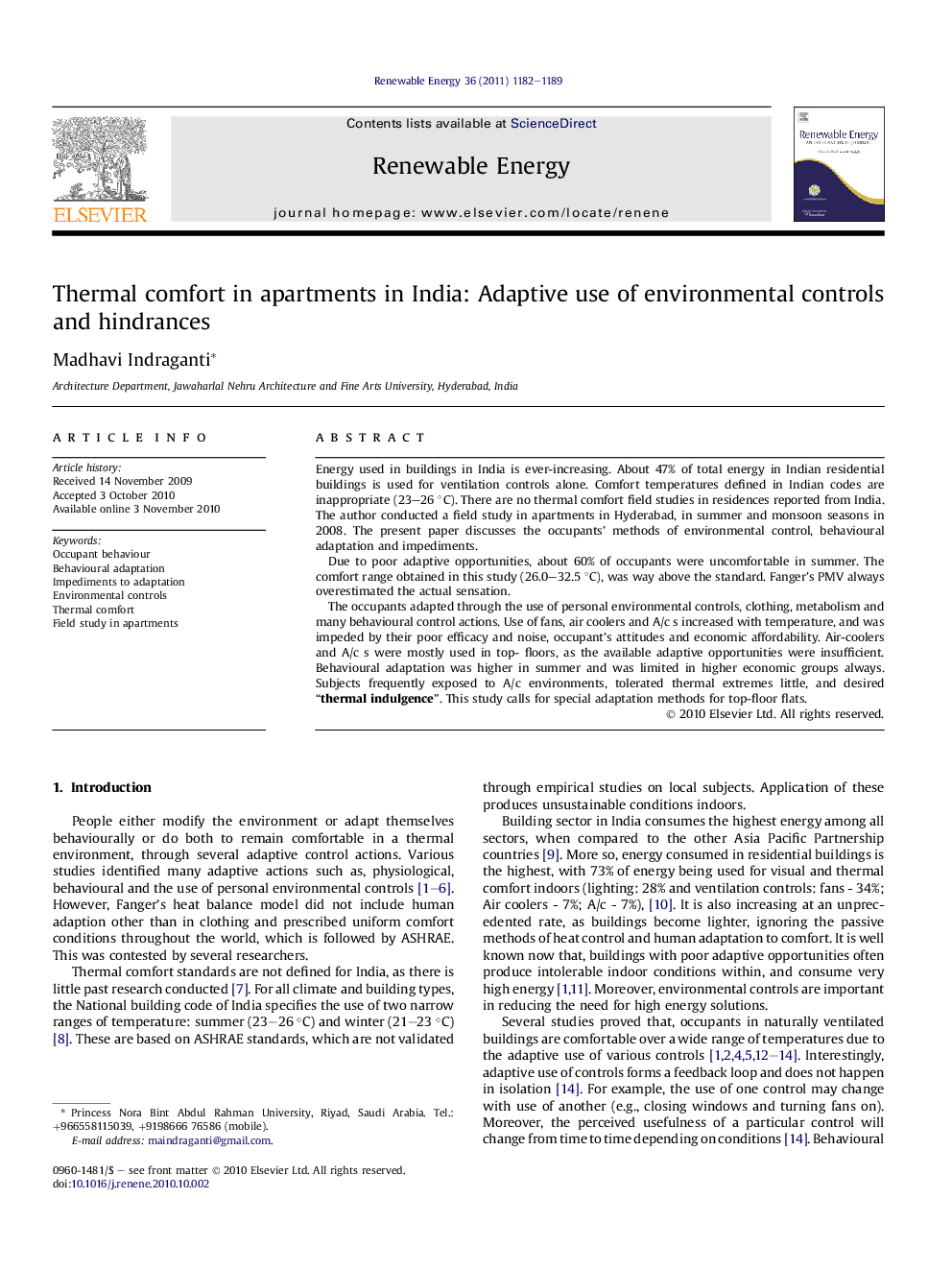| Article ID | Journal | Published Year | Pages | File Type |
|---|---|---|---|---|
| 301275 | Renewable Energy | 2011 | 8 Pages |
Energy used in buildings in India is ever-increasing. About 47% of total energy in Indian residential buildings is used for ventilation controls alone. Comfort temperatures defined in Indian codes are inappropriate (23–26 °C). There are no thermal comfort field studies in residences reported from India. The author conducted a field study in apartments in Hyderabad, in summer and monsoon seasons in 2008. The present paper discusses the occupants’ methods of environmental control, behavioural adaptation and impediments.Due to poor adaptive opportunities, about 60% of occupants were uncomfortable in summer. The comfort range obtained in this study (26.0–32.5 °C), was way above the standard. Fanger’s PMV always overestimated the actual sensation.The occupants adapted through the use of personal environmental controls, clothing, metabolism and many behavioural control actions. Use of fans, air coolers and A/c s increased with temperature, and was impeded by their poor efficacy and noise, occupant’s attitudes and economic affordability. Air-coolers and A/c s were mostly used in top- floors, as the available adaptive opportunities were insufficient. Behavioural adaptation was higher in summer and was limited in higher economic groups always. Subjects frequently exposed to A/c environments, tolerated thermal extremes little, and desired “thermal indulgence”. This study calls for special adaptation methods for top-floor flats.
